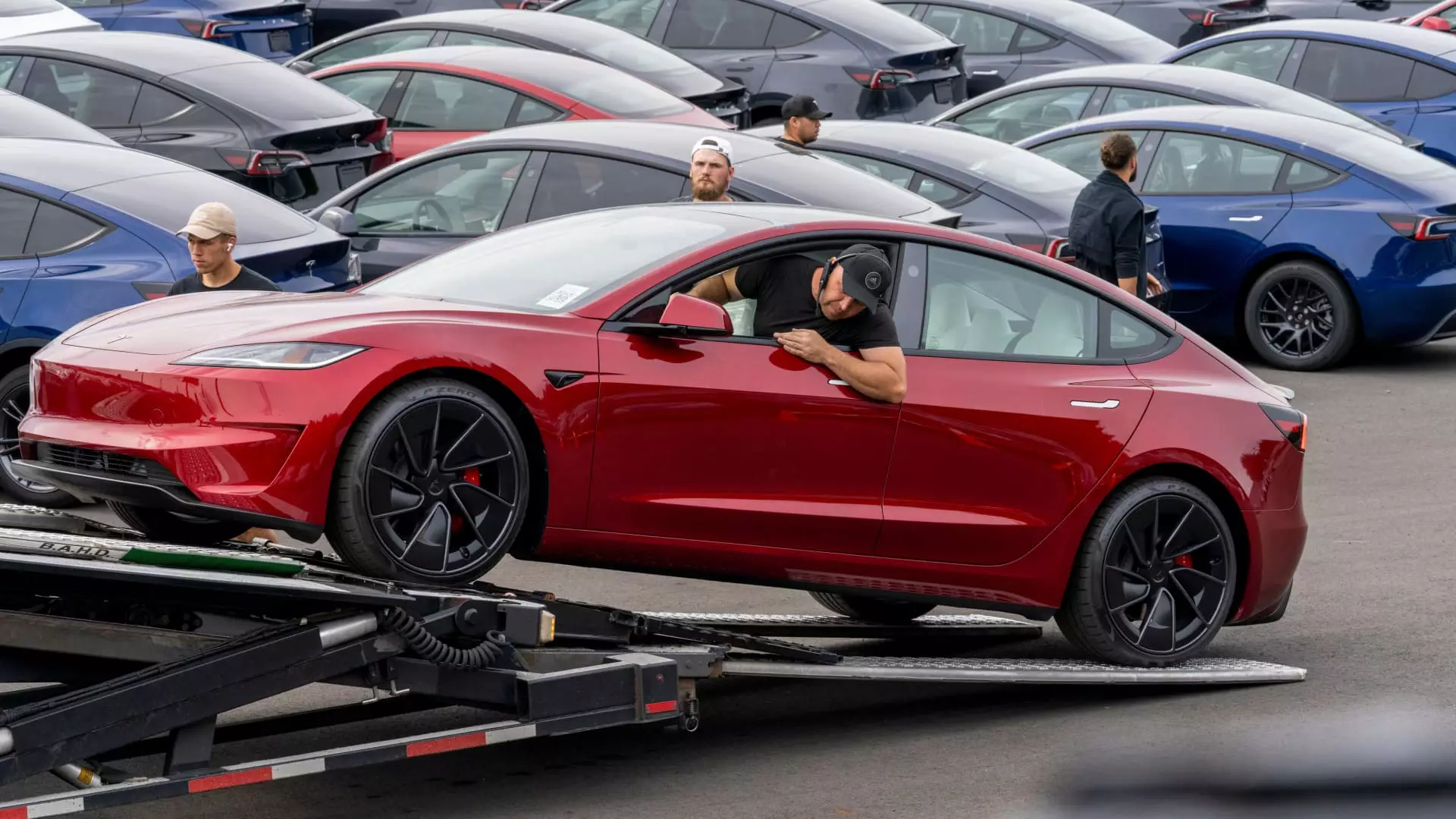In the fast-paced world of electric vehicles (EVs), Tesla remains a focal point of attention for investors and analysts alike. The company’s recent report concerning its production and delivery metrics for the third quarter of 2024 has generated significant reactions, particularly in the stock market. As revealed, Tesla delivered 462,890 vehicles and produced 469,796 units during this reporting period. However, this outcome fell short of analysts’ expectations that hovered around 463,310 deliveries. The market responded negatively, leading to a decline of approximately 3.7% in Tesla’s stock shortly after the report’s release.
To comprehend the bigger picture, it’s critical to juxtapose these latest figures against Tesla’s previous quarterly results. In the third quarter of 2023, the company reported 435,059 deliveries and 430,488 units produced. The increase in both metrics this year suggests growth, but the rate of increase seems sluggish compared to the rapid expansion seen in earlier years. For instance, in the second quarter of 2024, Tesla had reported 443,956 deliveries, indicating that while production numbers are seeing a general upward trend, the growth is not quite as remarkable as stakeholders might have hoped. This stagnation in growth raises important questions regarding Tesla’s competitive edge and future strategies.
Tesla’s once-dominant position in the EV sector is being tested by a surge in competition, particularly in China. Companies such as BYD, Geely, Li Auto, and Nio are continually enhancing their market share and offering competitive models that cater to consumer preferences. In the United States, traditional automakers like Ford and General Motors (GM) are becoming more prominent players in the electric vehicle segment. GM, for instance, saw its EV sales skyrocket by around 60% from the previous year, albeit with total figures of 32,100 units sold in the latest quarter, still a fraction of Tesla’s output. Meanwhile, Ford, which has been ramping up its EV production, is set to unveil results that may further highlight how legacy automakers are adapting in this evolving market.
Tesla’s market environment is not only shaped by numbers but also influenced heavily by the brand’s image. The actions and statements of CEO Elon Musk have drawn considerable scrutiny, with some critics pointing to controversial remarks and behaviors that have raised eyebrows. These controversies, compounded by shifts in market dynamics, have seemingly put pressure on Tesla’s brand reputation in the U.S. Despite these challenges, Tesla continues to lead the charge in battery electric vehicle sales, holding the top slot while brands like Hyundai lag behind.
Looking ahead, Tesla has refrained from providing explicit guidance for its 2024 delivery targets. However, executives have indicated expectations for a lower growth rate compared to previous years, despite the launch of the much-anticipated Cybertruck. This upcoming model is vital, not solely for diversifying the vehicle lineup but also for revitalizing interest in the brand’s offerings. Additionally, Tesla has recently reported deploying 6.9 GWh of energy storage products within the quarter, hinting at an expanding focus on energy solutions alongside its vehicle production.
As investors gear up for Tesla’s third-quarter earnings report, a crucial focus will undoubtedly lie on profit margins. The company has implemented various attractive financing options and incentives to stimulate sales, particularly in competitive markets like China and the U.S. To create further anticipation, Tesla has scheduled a marketing event on October 10, where it is expected to unveil its design concepts for a dedicated robotaxi, an initiative that could reassure stakeholders regarding Tesla’s self-driving ambitions given the progress being made by competitors in this space.
While Tesla’s third-quarter performance shows growth in delivery and production numbers, the market’s reaction and surrounding competitive pressures underscore an essential narrative: the road ahead is increasingly intricate. Tesla must navigate a tightening market landscape, manage its public image, and meet high expectations from loyal investors and EV enthusiasts alike. As the competition mounts and the marketplace evolves, the coming months will likely prove pivotal in determining Tesla’s trajectory.


Leave a Reply